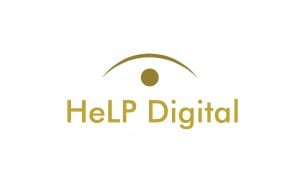The Contraception Choices Project
By Nathan Davies, on 23 February 2017
In this post Anasztazia Gubijev a research associate working on the Contraception Choices project with Dr Julia Bailey and Professor Judith Stephenson talks about her experiences on the contraception choices project which is split between PCPH and The Institute for Women’s Health.
The Contraception Choices project involves designing a digital intervention (a website) to help women choose a method of contraception that suits their needs. Many women are not aware of the wide range of contraceptive methods that are available to them and there are various misconceptions that deter women from using contraception. We are aiming to design a website that addresses some of the common misconceptions (such as thinking that hormones are harmful, that contraception causes infertility or that your body needs a break from contraception), and suggests contraceptive methods that may suit a woman’s preferences and lifestyle.
There are two phases in our project. Phase 1 involves doing a qualitative evaluation of women’s contraceptive knowledge and common misconceptions. Phase 2 is a pilot randomised controlled trial to evaluate effectiveness of our website. We are currently finishing up phase 1 and hoping to start phase 2 soon.
After a year and a half of working on this project there are a lot of things that I have learned, often by trial and error. We have made good progress on this project, but there have also been a few setbacks on the way. As an early careers researcher I wish I had known a few things before I started, so I will share these with you:
NHS ethics and R&D applications always take longer than you think they will.
Our project is a multi-site project because we recruit women from 5 different sites, so it made getting approval for recruitment quite tricky. It took us nearly 6 months to be given full approval to go ahead with recruitment at one of our project sites, which we definitely didn’t expect.
Make sure the sites you recruit from have the right population sample.
Our study population sample is women from the age of 15-30. One of our recruitment sites for phase 1 was the maternity unit at UCLH. After going through a lengthy and tedious process of getting NHS ethics and R&D approval we discovered that most women at UCLH were having babies in their late thirties or well into their forties! This meant that it was essential for us to change this maternity site so that we could recruit the population sample we needed for phase 2. Ideally you want to make sure the sites you recruit from have the right population sample from the start.
Food, drinks and incentives go a long way if you are struggling with recruitment.
We have been very lucky to have had a budget for offering the women we recruit incentives in the form of shopping vouchers. However, I still struggled with recruitment at some of our project sites, so we decided to also offer women drinks and pizza for taking part in our focus groups. Not only did this make recruitment a lot easier, offering women food before we started our focus groups was a nice ice breaker to get conversation flowing. If you don’t have the budget or ethics approval for offering incentives in the form of payment, then offering food and drinks is a budget friendly way of being able to offer something small in return for your participants giving up their time to help with your research.
And now onto what I enjoy most about being a research associate on this project:
I can honestly say that I have really enjoyed being a researcher on this project. Yes, there have been a few setbacks on the way, but the work that I have been involved in has been really interesting. One of the tasks that I really enjoyed was doing a literature review on women’s views of contraception on social media. I watched and analysed videos and comments posted on YouTube to gain a better understanding of contraceptive misconceptions. Social media is an underused resource for research, however we live in an increasingly digital world and it would be a shame to ignore all the voices and views we can learn from through social media.
I have also really enjoyed the qualitative field work, such as running focus groups and conducting individual interviews with women we have recruited. We have been actively seeking women’s views throughout this project, and their views have shaped the design and content of our website. I may have been dreaming of focus groups and interviews at some point because we have conducted so many, but we wouldn’t have been able to create our website without the valuable feedback we have received.
 Close
Close





 The programme consists of an interactive website which teaches children what to expect from surgery, and skills for coping with anxiety prior to the surgery. There are games which allow children to place equipment on animated animals and deep breathing exercises to encourage calm. The team have published findings from their randomized controlled trial of the program with children age 2 to 7 years old undergoing outpatient elective surgery. They found that children and their families found the programme helpful, easy to use and it led to a reduction in preoperative anxiety.
The programme consists of an interactive website which teaches children what to expect from surgery, and skills for coping with anxiety prior to the surgery. There are games which allow children to place equipment on animated animals and deep breathing exercises to encourage calm. The team have published findings from their randomized controlled trial of the program with children age 2 to 7 years old undergoing outpatient elective surgery. They found that children and their families found the programme helpful, easy to use and it led to a reduction in preoperative anxiety.
 ost Orla O’Donnell from the
ost Orla O’Donnell from the 
